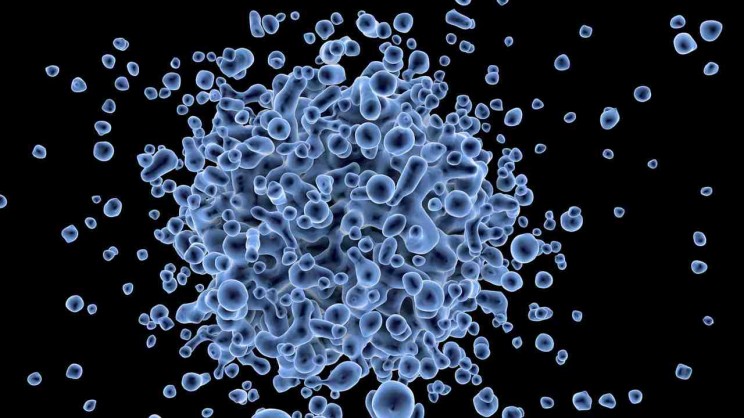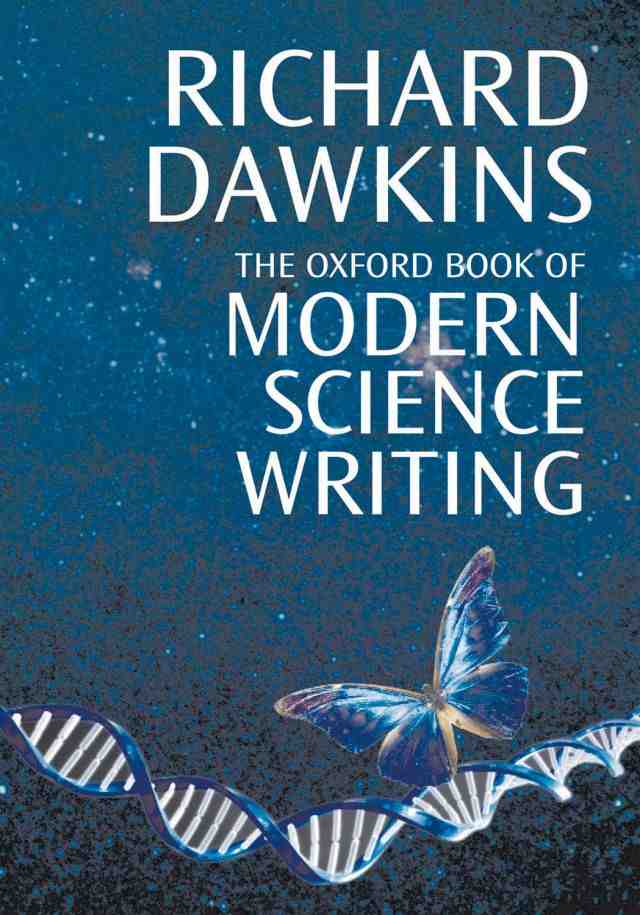Environmental Epigenetics is a new, international, peer-reviewed, fully open access journal, which publishes research in any area of science and medicine related to the field of epigenetics, with particular interest on environmental relevance. With the first issue scheduled to launch this summer, we found this to be the perfect time to speak with Dr. Michael K. […]
The post A Q&A with the Editor of Environmental Epigenetics appeared first on OUPblog.
By John Archibald
We humans have a love-hate relationship with bugs. I’m not talking about insects — although many of us cringe at the thought of them too — but rather the bugs we can’t see, the ones that make us sick.
Sure, microorganisms give us beer, wine, cheese, and yoghurt; hardly a day goes by without most people consuming food or drink produced by microbial fermentation. And we put microbes to good use in the laboratory, as vehicles for the production of insulin and other life-saving drugs, for example.
But microbes are also responsible for much of what ails us, from annoying stomach ‘bugs’ to deadly infectious diseases such as tuberculosis and plague. Bacteria and viruses are even linked to certain cancers. Bugs are bad; antibiotics and antivirals are good. We spend billions annually trying to rid ourselves of microorganisms, and if they were to all disappear, well, all the better, right?
This is, of course, nonsense. Even the most ardent germaphobe would take a deep breath and accept the fact that we could no more survive without microbes than we could without oxygen. No matter how clean we strive to be, there are 100 trillion bacterial cells living on and within our bodies, 10 times the number of human cells that comprise ‘us’. Hundreds of different bacterial species live within our intestines, hundreds more thrive in our mouths and on our skin. Add in the resident viruses, fungi, and small animals such as worms and mites, and the human body becomes a full-blown ecosystem, a microcosm of the world around us. And like any ecosystem, if thrown off-balance bad things can happen. For example, many of our ‘good’ bacteria help us metabolize food and fight off illness. But after a prolonged course of antibiotics such bacteria can be knocked flat, and normally benign species such as ‘Clostridium difficile’ can grow out of control and cause disease.

Given the complexity of our body jungle, some researchers go as far as to propose that there is no such thing as a ‘human being’. Each of us should instead be thought of as a human-microbe symbiosis, a complex biological relationship in which neither partner can survive without the other. As disturbing a notion as this may be, one thing is indisputable: we depend on our microbiome and it depends on us.
And there is an even more fundamental way in which the survival of Homo sapiens is intimately tied to the hidden microbial majority of life. Each and every one of our 10 trillion cells betrays its microbial ancestry in harboring mitochondria, tiny subcellular factories that use oxygen to convert our food into ATP, the energy currency of all living cells. Our mitochondria are, in essence, domesticated bacteria — oxygen-consuming bacteria that took up residence inside another bacterium more than a billion years ago and never left. We know this because mitochondria possess tiny remnants of bacterium-like DNA inside them, distinct from the DNA housed in the cell nucleus. Modern genetic investigations have revealed that mitochondria are a throwback to a time before complex animals, plants, or fungi had arisen, a time when life was exclusively microbial.
As we ponder the bacterial nature of our mitochondria, it is also instructive to consider where the oxygen they so depend on actually comes from. The answer is photosynthesis. Within the cells of plants and algae are the all-important chloroplasts, green-tinged, DNA-containing factories that absorb sunlight, fix carbon dioxide, and pump oxygen into the atmosphere by the truckload. Most of the oxygen we breathe comes from the photosynthetic activities of these plants and algae—and like mitochondria, chloroplasts are derived from bacteria by symbiosis. The genetic signature written within chloroplast DNA links them to the myriad of free-living cyanobacteria drifting in the world’s oceans. Photosynthesis and respiration are the biochemical yin and yang of life on Earth. The energy that flows through chloroplasts and mitochondria connects life in the furthest corners of the biosphere.
For all our biological sophistication and intelligence, one could argue that we humans are little more than the sum of the individual cells from which we are built. And as is the case for all other complex multicellular organisms, our existence is inexorably linked to the sea of microbes that share our physical space. It is a reality we come by honestly. As we struggle to tame and exploit the microbial world, we would do well to remember that symbiosis—the living together of distinct organisms—explains both what we are and how we got here.
John Archibald is Professor of Biochemistry and Molecular Biology at Dalhousie University and a Senior Fellow of the Canadian Institute for Advanced Research, Program in Integrated Microbial Biodiversity. He is an Associate Editor for Genome Biology & Evolution and an Editorial Board Member of various scientific journals, including Current Biology, Eukaryotic Cell, and BMC Biology. He is the author of One Plus One Equals One: Symbiosis and the Evolution of Complex Life.
Subscribe to the OUPblog via
email or
RSS.
Subscribe to only science and medicine articles on the OUPblog via
email or
RSS.
Image credit: Virus Microbiology. Public domain via Pixabay
The post Microbes matter appeared first on OUPblog.

By Cassie Ammerman- Publicity Assistant
Richard Dawkins is the bestselling author of The Selfish Gene and The God Delusion. He’s also a pre-eminent scientist, the first holder of the Charles Simonyi Chair of the Public Understanding of Science at Oxford, and is a fellow of New College, Oxford. Called “Darwin’s Rottweiler” by the media, he is one of the most famous advocates of Darwinian evolution. His most recent book is The Oxford Guide to Modern Science Writing, a collection of the best science writing in the last century.
pre-eminent scientist, the first holder of the Charles Simonyi Chair of the Public Understanding of Science at Oxford, and is a fellow of New College, Oxford. Called “Darwin’s Rottweiler” by the media, he is one of the most famous advocates of Darwinian evolution. His most recent book is The Oxford Guide to Modern Science Writing, a collection of the best science writing in the last century.
This is the first in a series of podcasts we’ll be running from an interview with Richard Dawkins. In it, Dawkins talks about the different scientists he chose to include in The Oxford Book of Modern Science Writing. In this selection, Dawkins talks with Dorian Devins about James Watson and Francis Crick, the two men famous for discovering the structure of DNA.
Transcript after the jump.
DORIAN DEVINS: Francis Crick is one of the people in here, and I know you…
RICHARD DAWKINS: Yes, I met him a couple of times. I know Jim Watson rather better. Francis Crick died a couple of years ago. He was of course the other half of Watson and Crick, and they were both indispensable. It’s a wonderful illustration of how two people coming together seem to make something that’s greater than the sum of their parts. Francis Crick has written a number of books. He’s always very thoughtful, very stimulating. It’s impossible for him to say anything that isn’t interesting, and he was one of the great, possibly the greatest, intellects of the molecular biology revolution, which started with Watson and Crick in 1953, when they were both young men. But Crick went on to in a way dominate the field. I mean, in the elucidation of the genetic code, the fact that it’s a triplet code, for example, he played a leading role in that. So he became a kind of elder statesman of molecular genetics, and then rather later in his life, he switched completely to a totally new field, which was the study of consciousness. And he was never really a proper neurobiologist, but he sort of somehow managed to well, use his eminence in the field to open doors to talk to neurobiologists. And once again, he was a very, very thoughtful, stimulating figure in that field, as well as his own field of molecular genetics.
DEVINS: Whereas I guess Watson, more or less, stuck to genetics, although he did…
DAWKINS: Yes he did stick with genetics, and Watson was pretty much involved in initiating the human genome project. He didn’t stay in the human genome project, but he was largely responsible for getting it started in the first place.
DEVINS: And their writing styles are so different. It’s interesting.
DAWKINS: Yes, well, that’s right. Watson’s writing style is amazingly readable, but very odd. I mean, it’s…any teacher of English would blue-pencil it straight away. He had a most weird tendency to stick strings of adjectives before a—not so much adjectives, more phrases that count as adjectives—so he’ll say, if he wants to say he walked by, well quite close to here is Keble College (which is the Victorian building designed by Butterfield), Watson will say “I walked by the Butterfield-designed Keble College.” Sticking an adjective, making a phrase into an adjective, and then sticking it before the noun. And it’s an odd way of writing, but for some reason, it’s very readable, and I find that his books are page turners in a way that any teacher of English would sort of veto.
DEVINS: It’s funny how the personalities come out in the writing sometimes.
DAWKINS: Yes, that’s true. I think it’s part of the personality, and I think it’s because Watson writes in such an irresponsible way. He doesn’t mind who he offends, and so you’re always kind of turning the page, waiting for the next bit of scandal really.
DEVINS: As he is in life.
DAWKINS: Yes.
ShareThis

Wear this hat on a long run through SW Portland (aka Puddletown) and what do you get:
- One serious nod from an old man walking
- Two young women who will not meet your eyes at ALL
- One bemused double-take from a guy leaving his apartment
- One chuckle from Paul, the homeless guy (guess he knows I'm not that tough)
- The desire to run faster, without stopping, like you really are in the FBI
Portland has a love-hate relationship with the FBI. We don't participate in the joint terrorism task force, basically because we don't trust the FBI. We watched them arrest local lawyer Brandon Mayfield. They misidentified a fingerpint found at the Madrid train bombings as his, snuck into his house, wiretapped him. They arrested him under a material witness warrant rather than under charge, and held him with no access to family and limited access to legal counsel. Later, the FBI leaked the nature of the charges to the media and the family discovered what the charges were by watching the news. His family protested that Mayfield had no connection with the bombings, nor had he been to Spain in over 11 years.
Can you say profiling? I'm sure Brandon Mayfield would never have been arrested if he hadn't converted to Islam.








